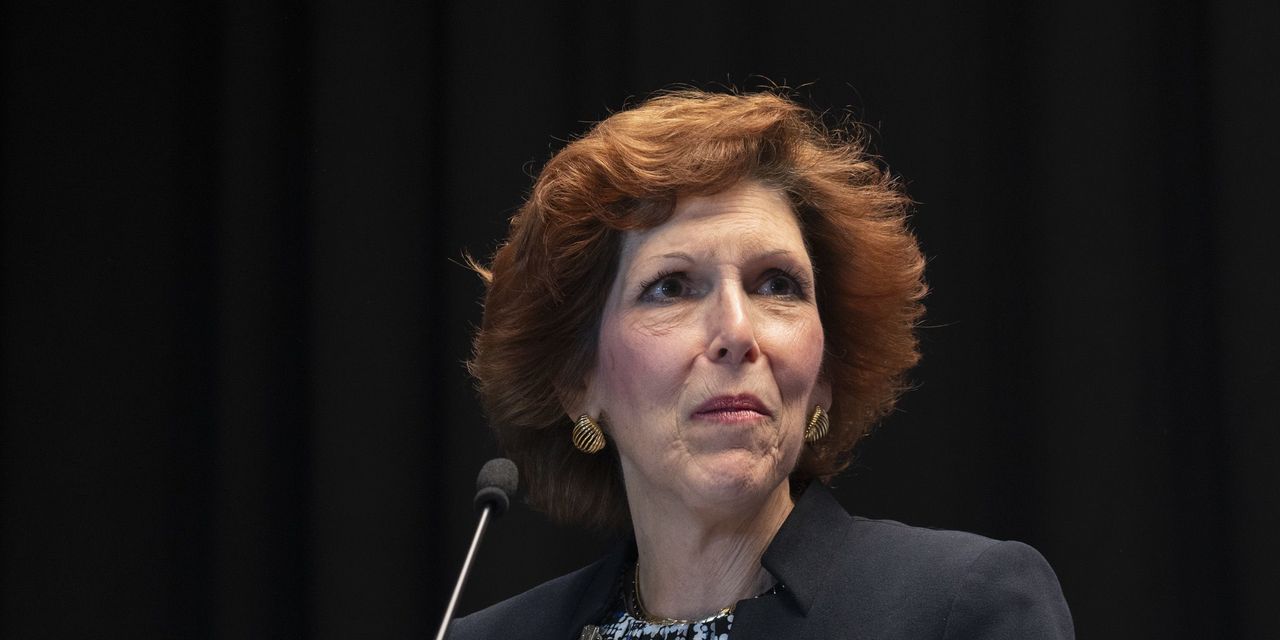The president of the Cleveland Federal Reserve said Thursday that the central bank needs to keep raising interest rates until high U.S. inflation has begun to subside, joining a coterie of senior Fed officials who’ve backed more aggressive measures.
“We’re committed to getting inflation down,” Loretta Mester said at an event at the Economic Club of Pittsburgh. She needs to see several months of easing price pressures, she said, before she could be sure the Fed was making progress.
While the economy is slowing, Mester insisted the U.S. has not fallen into recession despite two straight quarters of declines in gross domestic product.
“Were not in a recession right now. Are the risks of recession going up? Yes.”
An old rule of thumb is that two quarters of negative GDP constitutes a recession, but the group of prominent economists responsible for declaring one are not bound by that informal definition.
Mester said most business leaders she speaks to told her they are still trying to hire workers, a sign the economy is still growing and that demand has not slowed enough to help alleviate inflationary pressures.
Mester is viewed as one of the more hawkish policy members of the Fed on fighting inflation. She is a voting member this year of the panel that sets a key short-term U.S. interest rate.
The Fed has raised its key U.S. interest rate repeatedly since March to try to bring high inflation down.
The so-called fed funds rate, which sat near zero during the pandemic, was lifted to a range of 2.25% to 2.5% in July. The Fed could raise the rate to as high as 4% by next year.
Higher rates slow the economy by raising the borrowing costs for businesses and consumers.
The Fed is raising rates to try to extinguish raging U.S. inflation. The yearly increase in the cost of living rose to a nearly 41-year high of 9.1% in June, up from less than 2% a year and a half ago.
Mester and other senior Fed officials insist they will keep raising rates until inflation starts to subside, even if the strategy risks inducing a second recession in three years.
Fed decision-makers next meets on September 20-21, when another rate hike is expected.
Mester did not tip her hand on how big a rate hike she would support. The Fed has raised its benchmark rate by 0.75 percentage points in each of its last two meetings.
Mester also said she would like the Fed to reduce its nearly $9 trillion balance sheet to $6.5 trillion to $7 trillion within a few years, including the sale of mortgage-backed securities.
The Fed doubled its balance sheet during the pandemic by buying U.S. Treasurys and mortgage-backed securities in a successful effort to drive down long-term interest rates. The rate on a 30-year mortgage, for example, fell below 3% last year to a record low.
Mester admitted she did not know how far the Fed would go, suggesting the size of the balance sheet might not return to pre-pandemic levels of around $4 trillion.
U.S. stocks
DJIA,
and bonds
TMUBMUSD10Y,
were little changed after Mester’s remarks.
